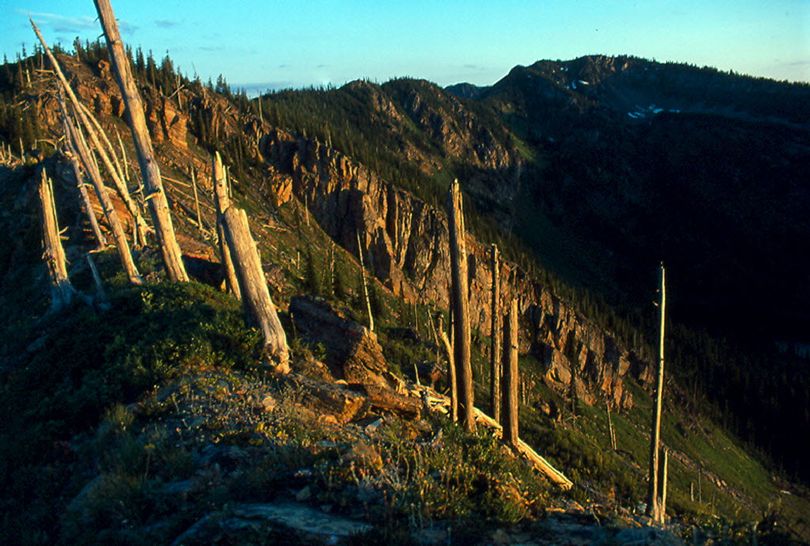Idaho lawmakers get divided testimony on taking over federal lands

PUBLIC LANDS — A proposal by Idaho lawmakers to assume control of millions of acres of federal land statewide earned mixed reviews today, with supporters calling it an essential step to revitalizing rural economies and critics panning it as a financial boondoggle, according to a story that's just been moved by the Associated Press.
The Federal Lands Interim Committee meeting gave lawmakers their first chance to gauge public opinion on a plan calling on the federal government to cede much of the public land it oversees in Idaho to the state, writes AP's Todd Dvorak in Boise.
Earlier this year, the Legislature approved a resolution making a case for the land transfer and the committee is spending two years to study the merits before submitting a recommendation in 2015.
Those encouraging lawmakers Wednesday included leaders of tea party groups, foresters who’ve seen local economies struggle amid declines in timber cutting and the shutdown of sawmills and county leaders frustrated with the management of national forest lands.
Ken Postma, a former forester for wood products company Boise-Cascade, argued the state would be a better steward of the forests and more amenable to expanding logging and other activities.
Read on for more of the story from the Associated Press:
“I’ve lived through the downsizing and the impact that shutting down the forest has had on friends, families, schools, roads and bridges,” said Postma, 62, of Cascade. “Nothing is better in Valley County than when we had sawmills, when we had people working.”
Elected officials from Idaho, Shoshone and Custer counties shared gripes about land use decisions made by the Forest Service and Bureau of Land Management, agencies that oversee 32 million acres of forests, rangeland and roadless wilderness in Idaho. Policy changes local leaders contend have favored environmental agendas in the last two decades have throttled local economies, schools and transportation budgets.
“We’ve got to figure out how to fund our governments,” said Jim Chmelik, a commissioner in Idaho County, which has 4.4 million acres of federal forests. “We are a natural resource community, and we need to use these resources.”
The proposal has its share of detractors who say the state lacks the expertise and resources to take on such an ambitious land transfer. Critics cite the tens of millions of dollars spent by the federal government each year to fight wildfires or the money needed to maintain roads, campgrounds and trails as reasons to foreclose on the idea.
Facing mounting deficits in the first years of a takeover, critics claim the state would then be forced to consider selling off public lands to private companies and developers.
“Taxpayer money is going to be what’s lost if this doesn’t work,” said Jim Nunley, president of the Idaho Wildlife Federation. “You have to consider, from a scientific standpoint ... fighting wildfires is just going to get more expensive in the future.”
The committee has yet to delve into the details of cost.
Earlier this summer, Idaho Department of Lands officials provided the committee with a rough financial sketch, estimating the state could collect between $50 million and $75 million annually for public schools and universities by allowing more timber cutting.
Evan Hjerpe, a forest economist, submitted an analysis Wednesday that projected significant deficits tied to a massive lands transfer. His report, paid for by the Idaho Conservation League, estimated it would cost Idaho $1.5 billion in the first 10 years to pay for wildfire suppression, recreation and road maintenance and forest management.
In 2012, the federal government paid 90 percent of the $210 million tab for fighting fires that burned 1.75 million acres across Idaho.
Seth Grigg, policy analyst with the Idaho Association of Counties, said a member survey found support for the committee’s study. But he told lawmakers county leaders are also concerned about the potential loss of federal payments tied to public lands. In 2011, Idaho’s 44 counties divvied up more than $44 million in such payments that are used to fund schools, roads and bridges.
“The loss of that revenue would be very detrimental to many counties, especially those that get more than half of their annual revenue from those payments,” Grigg said.
Idaho’s resolution is modeled after legislation adopted in Utah and debated in Arizona and a handful of other Western states and underpinned by a legal theory that the federal government reneged on a promise a century ago to return federal lands to the states.
Idaho lawmakers, like those in Utah, claim the federal government has a duty to transfer public lands to the states, with exceptions for tribal reservations, national parks and monuments and defense lands.
